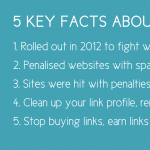How to kill arguments and force smarter thinking
One idea is a bad idea
Lots of times, someone will tell you they’ve got an idea and they can’t wait to start on it.
But sometimes that idea sounds stupendously bad.
If you just start poking holes in their idea then you come off as an asshole.
And either you fail to convince the person that their idea is bad — in which case you (or your team or your company) still have a bad idea.
Or you successfully berate the person until they give up on their idea — in which case you have no ideas.
Neither is ideal.
Two ideas is an argument
Sometimes two people will will be simultaneously trying to share their own ideas while poking holes in each other’s ideas.
Or, also common, you will respond to an idea that you don’t like by proposing your own alternative idea.
Congratulations — you’ve now picked a fight.
It’s incredibly hard for the original person to give up their idea because they won’t feel like their idea was even heard or understood. Thus, they also won’t take the time to hear and understand your alternative idea.
Now you’re in an impossible argument. This is not a discussion and it’s not healthy.
Three ideas is a brainstorm
This is the hack.
Instead of poking holes, ask how it compares to other ideas.
I just flat out tell people that I want to see at least three ideas.
90% of the time they will stare at me blankly — they can’t even think of a single alternative idea.
When this happens I start throwing out REALLY BAD IDEAS.
Let me give you my go to BAD IDEAS that work in almost any situation: we could shut down the company or we could delete the feature or we could do nothing.
For some reason, bad ideas unblock people. My theory is that people are blocked because they’re trying to edit their ideas to things that perfectly meet their own idea of the requirements. That’s natural — people want to say smart things, not stupid things.
But editing ideas is a brainstorming no-no. So BAD IDEAS get the ball rolling.
Here’s what happens once you have three ideas
You will very shortly have 7 ideas. Nobody is satisfied by the bad ideas I throw out, so they start throwing out some actual good ones.
People (mostly) forget their own idea. Some of the ideas will be riffs that combine ideas. That way everyone in the room will have ownership.
Everyone figures out quickly that they didn’t understand the requirements. Nothing says “that’s not a requirement” like the boss throwing out an idea that’s missing that requirement.
They say you should lead with requirements instead of implementation (or at least if you’re in software, you’ll hear this fairly often). But the truth is that many people think in terms of implementation — so the brainstorm helps a lot of people really understand what’s important and what’s not.
You flared — now focus
When you do a brainstorm to solve a problem or generate an idea, you’ll always experience two sides. First you flare to generate as many ideas as possible. Then you focus to decide on the one path that you’re actually going to execute on.
[Hat tip for “Flare and focus” to Adaptive Path co-founder janice fraser. I stole a lot of facilitation tactics from her and designers like her.]
So, now, you’ve used the Rule of Three to generate a bunch of ideas. You’re half way there. You still need to pick a winner.
The good news is that unlike a lot of brainstorming, the Rule of Threealmost always resolves itself naturally.
It’s sort of magic.
When I do this with engineers usually we’ll hit on an implementation that’s faster, cheaper and cleaner to build. So there’s no argument — just do that one.
When I do this with product design — we also almost always hit on a design that’s simpler or obviously better in some important way.
So, that’s the hack. Tell the people who work with about your Rule of Three:
One idea is a bad idea, two ideas is an argument, three ideas is a brainstorm.








No Comments on this Post.Be the first